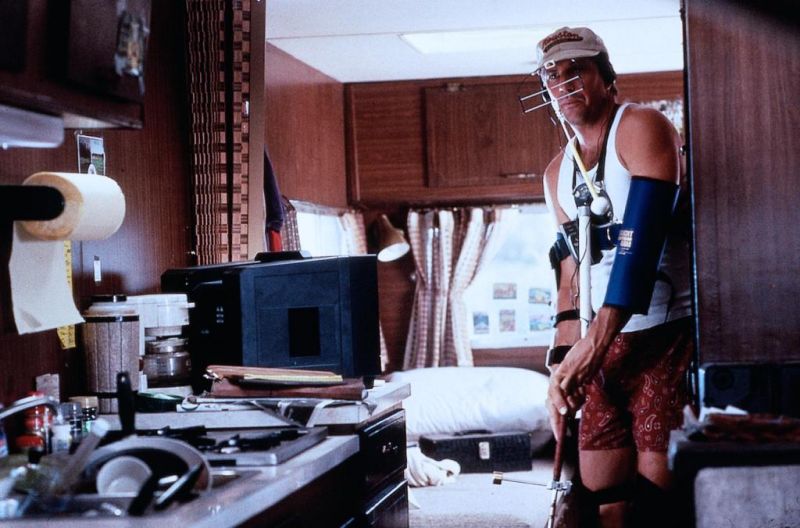
Golf has so much exposure now, and so much information out there for the masses to read through and watch. As someone who makes his living off of the game, I’m certainly happy to see as many golf headlines as possible. But there is a dark side to it all, and that dark side comes in the form of instruction tips. Much of my lessons are spent fixing or correcting damage done by You Tube videos, magazines, and golf buddies moonlighting as instructors for their friends.
First off, let’s address the issue of your friends giving you advice. If you think about it logically, it’s crazy! In many cases my students are taking tips from friends who can’t even beat them on the golf course. Would you do that in any other area of life, taking “expert” information from someone who has less education and experience than you? Yet there they are, at every corner of the driving range and golf course, “teaching” their buddy bad information and guessing at the problem. Remember that a good coach shouldn’t be trying to fix the look of the swing, only how it functions; those who are not experienced at helping golfers hit the ball better will often fix something that doesn’t look right to them but rarely has any bearing on how the ball flies. This is a critical difference between professionals and those who give tips on the range, and even in some cases there are professionals who also work to fix style over function. In my mind, and the way I teach on a daily basis, it’s important to embrace what YOU do as an individual, keep the things that you can repeat, and only change what will change the ball flight for the better. So beware of the driving range friend! They may have all the best intentions in the world, but no real experience to back it up.
Another area to watch out for is the internet. You Tube has been a great source for information for millions of golfers, and I even have many videos of my own on my You Tube channel. It’s a great way to gain exposure and create better branding. But does it help your golf game? It depends. What I mean is that there are so many ideas and theories out there, and it is very easy to look up one particular issue in a swing or in the short game and find two videos that are saying completely opposite things. Then what do you do? You watch both, try everything, and in the end you hit the ball worse because you can’t filter out what works for you and what you should ignore. This is the vicious cycle I see so often. A golfer who wants to get better but simply can’t get out of their own way due to excessive experimentation. This is why it’s so important to take lessons and ask lots of questions of your coach. Should you stop watching golf videos – no! But write down something that you see that catches your eye and bounce it off a professional instructor to see if it fits into your game. When it comes to watching and seeking out new things, too much information can be the enemy of progress.
Golf television is another area that you should approach with caution. Shows that feature instruction on Golf Channel like “The Swing Fix” and “School of Golf” are great for the game, as are their hosts, Michael Breed and Martin Hall. But golfers should also step back and remember what these shows are for first: entertainment. They are set at a fast pace to create interest, and while the tips and information are based on lots of experience by both hosts, it doesn’t always apply to YOUR game. For example, they may try to give a drill or way to fix a slice, but due to time constraints they don’t have time to dig deeply into issues, and the fact is that a person can slice the ball for a large number of reasons! So while the presented fix to the slice may help someone out there, there may be a totally different reason for why you slice the ball. So enjoy the golf shows, and keep watching them. But as I mentioned before, always take the time to ask a professional who knows your game if the info that you saw on television is really right for you.
In my mind, it’s a great time to be a golfer who wants to improve. On one hand, there is a wealth of information out there in all forms. Publications like Golf Digest not only have the classic magazine that comes to your mail box, but the now have a greater online presence that features instruction tips. If you are a golfer starving for that next “secret” to your game, you can find loads of info to look through on a daily basis. The problem with a lot of these publications is that they recycle and re-package old tips and swing theories that in many cases are just not factually correct or really aren’t what the author actually does. You can even see there are words that a Tour player describes that will not match the pictures of their own swing! Here is the lesson from listening to Tour players in publications: in most cases they feel something that is way different than they actually do in their real game. So remember that this is a world-class golfer and their information may not apply well to the average, daily player.
So in the end, if you love golf, you can find more pages and clicks out there than ever before. Look for it and enjoy it, but always know that we are all individuals and there is a danger in listening to information given to the masses.



